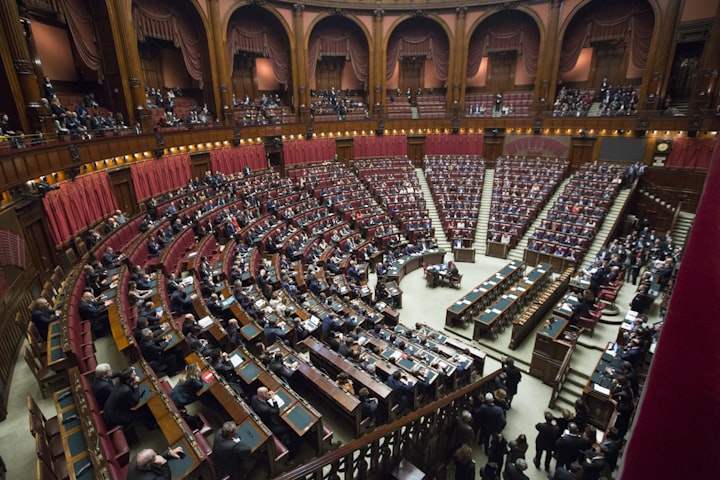The Facebook Algorithm Explained
How exactly does the social media titan's notorious algorithm work?

A few years ago, back when Facebook relatively had a lot fewer users, you would be able to view every post from pages you liked in your timeline. Now, with almost 2 BILLION users active on the site, as well as the insane amount of marketers and advertisers getting their content on ad space on Facebook, there really isn’t enough space to push all content on people’s feeds.
Facebook has even stated that they were running out of ad space, which is insane considering the number of users it has.
In an attempt to tailor to consumer satisfaction better, they have implemented what are known as algorithms.
What exactly is a social media algorithm?
In essence, what a social media algorithm does is scan your content to see how high quality it is - Facebook wants to push the highest quality content to the top. This is to increase consumer satisfaction, to keep more users coming back to the site. The higher the quality of content, the more you’ll see of it.
Another reason Facebook and other social media sites have now implemented heavy algorithms is to remove spam. No one likes spam, so social media sites have worked hard to stop the spread of spammy content.
Facebook also wants to push content on people’s feeds that they are interested in. This is tailored through previous engagement from the user; various algorithms scan what type of posts and pages a certain user engages with, and tries to show similar content to them. Once again, this is to ensure user satisfaction.
How do you beat this you ask?
Facebook may be the only social media platform which explicitly states HOW their algorithm works and how to stay on top of it. This is how it works:
The equation is quite simple, consisting of four basic elements. First is the interest in the creator (the person making the post); the more your fans engage with your content as a creator, the more this factor is driven up.
The second factor is the post itself, and how well it is doing in terms of engagement.
The third is the type of post (link, text, image, video, live video). This is the most controllable element in the algorithm.
Finally, the fourth element at play is the recency of the post. Newer content will generally be shown first. Note that it is important to keep in mind that this is the LAST factor the algorithm considers. This is explained further on.
When a person or a page makes a post, Facebook's algorithm scans the post to determine the type of content it is. Then, the post is shown to a sample audience from your fans.
The algorithm then scans the reactions from said sample, if users are reacting quickly, then the algorithm shows it to more fans, and so on. A reaction can be anything - a like, a share, a comment, whatever. The more reactions you have on a post, the more people the post reaches. Shares are more valuable, as each share itself increases the possibility of higher engagement.
However, there is still certain content that Facebook prefers when it comes to posts. Text posts do better than links, photos do better than text posts, videos do better than photos. Most people don’t understand why this is.
Facebook wants users to stay as long as possible on their site. Hence they will prefer content that keeps people on the site longer.
Live videos are currently what gets shown the MOST on Facebook. According to a statement from them, the longer a live video is, the higher it will appear in people’s feeds, and the more people will see it. Once again, this is to keep people active on the site longer.
In addition, social media analysts have discovered that the more a person goes live, the more their non-live content will show up on people’s feeds.
Common mistakes and misconceptions about the algorithm:
A common theory is that posting when the most amount of people are active makes the reach of the post better. This is NOT the case anymore. Whom a certain post is shown to is completely randomized, meaning a post you made at 3 AM could be the first thing a person sees at 5 PM.
Research shows that post engagement is actually higher during low volume periods, despite low volume periods coinciding with overnight hours.
In the case of links, posts linking to longer articles (over 1000-3000 words) received more engagement.
This makes the practice of scheduling posts on social media and posting the same content multiple times completely obsolete.
In fact, research shows that posting the same content multiple times throughout the day actually DECREASES the reach of said content. This is because the algorithm scans each post; if duplicates of that post are found from the same source, the content is shown much less.
Another major mistake people make is by asking others to share the post directly on the post itself. Facebook's algorithm scans and looks for certain call-to-action words; if a post gets flagged containing a call-to-action word or phrase such as "Share this!" or "Like if _____", the reach will in fact decrease.
Final Thoughts:
In other words, the trick to beating the Facebook algorithm is to simply post less but higher quality content, and make sure you get the most engagement on said content. Post at low volume times when your posts won’t have much competition in people’s feeds. Go live more frequently, and go live for longer periods of time. Take the old fashioned method of community development, and engage with your fans and followers more, on a more personal level. Avoid call-to-action words, and make a habit of posting more organic content such as photos and videos as opposed to links.
Disclaimer: This has mostly been obtained through personal research and experience and should in no way be construed as scientific data.
About the Creator
Fahim Ahmed
Twitter: @tbhitsfahim







Comments
There are no comments for this story
Be the first to respond and start the conversation.